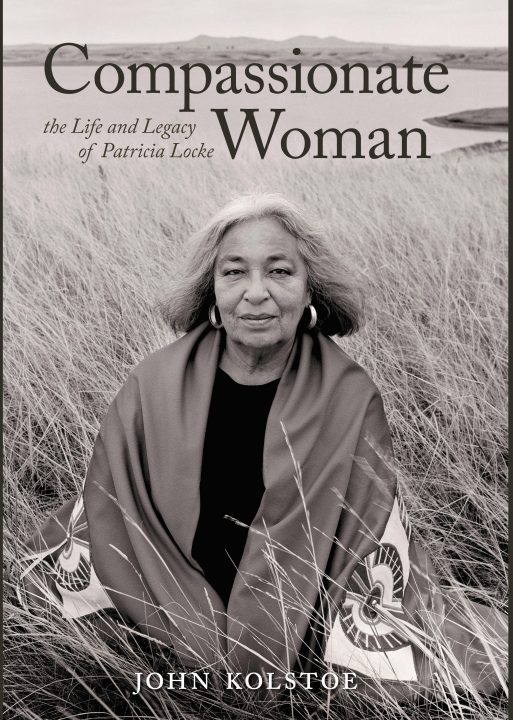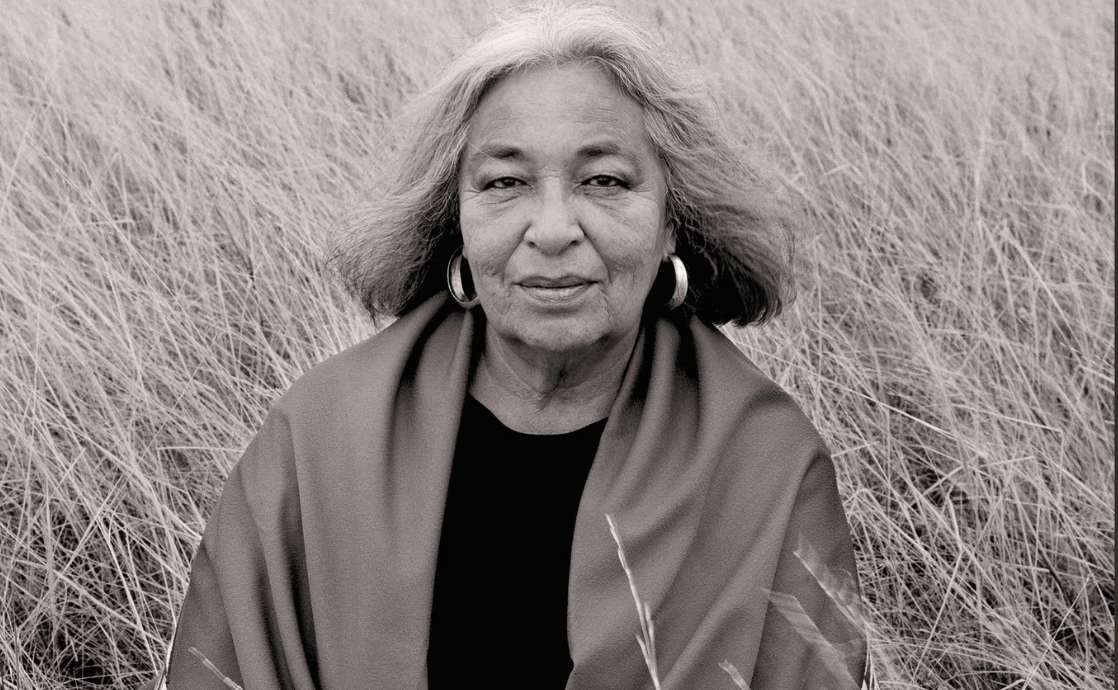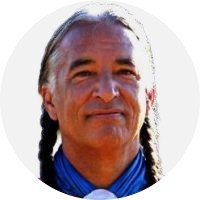The views expressed in our content reflect individual perspectives and do not represent the authoritative views of the Baha'i Faith.
Can we simultaneously believe in more than one divine messenger? Yes, the Baha’i teachings emphatically say – in fact, all Baha’is accept each one of God’s prophets.
Q: Kevin, in researching this series of articles on Patricia Locke, your late mother, who was inducted into the National Women’s Hall of Fame in 2005, I requested written permission from the Council of the Parliament of the World’s Religions to publish an archival digital audio file of a panel presentation in the 1993 Parliament of the World’s Religions featuring her, among other presenters, as well as the words she spoke during that presentation.
On December 1, 2021, permission was granted by the Parliament of the World’s Religions, so it is with great pleasure that we now publish, online, the entire digital audio file of the following session: “Native American Women’s Wisdom: Our Spiritual Selves” (which, according to the 1993 official program, p. 107, was entitled, “Native Women’s Wisdom: Our Spiritual Paths”, held on Thursday, September 2, 1993.
Here’s the link to this historic archival audio file
CREDIT: Digital file of Tape 512 Native American Women’s Wisdom Our Spiritual Selves, 1993 Parliament of the World’s Religions audio recording, 1993 Parliament of the World’s Religions [267 audio cassettes housed in 15 containers]. Chicago, IL: Teach ’em. ARCPWR. 291.06 N716W1993, 1993 Parliament of the World’s Religions in Chicago records, Collection Identifier: MSS0077, Special Collections and Archives, DePaul University, John T. Richardson Library. Permission granted by the Parliament of the World’s Religions, courtesy of Miriam V. Quezada Mendez, Communication & Program Manager at Parliament of the World’s Religions, December 1, 2021.
So Kevin, please tell us about your initial impressions of Patricia Locke’s presentation, and of the rest of the session, including the other panel presentations and the ensuing discussions. Also, what was it like to hear your mother’s recorded voice after all these years? What about her primary topic – White Buffalo Calf Woman and the seven sacred rituals that she brought, along with her associated spiritual and moral teachings?
A: Thank you, Chris, for uncovering this precious recording. Indeed, this is a synopsis of topics very dear to my mother, Patricia Locke. As an Indigenous person from the United States, she was always keenly aware of intense marginalization, invalidation, and ignorance – and she counteracted these realities with her deep intellect and ready pen. Interestingly, my mother intentionally never learned to type, because it would have relegated her to subservient clerical positions, given the era of her activity.
Her 19th-century-born parents always emphasized their spiritual heritage — readily participating, but in secret, knowing the persecution that, if discovered, would surely befall my mother and her sister. Her grandmother’s name was Pte Saŋ Wiŋ, White Buffalo Woman, so it became a family tradition to have reverence for the divine messenger White Buffalo Calf Woman and her sacred role in connecting the people to God.
RELATED: A Luminary of Knowledge for Every Land
Q: In the official program of the Parliament of World’s Religions, Patricia Locke is described as “Standing Rock Sioux and Minnesota Chippewa; educator; National coordinator of the Coalition for amendments to the American Indian Religious Freedom Act.”
Although freedom of religion was enshrined in the First Amendment to the U.S. Constitution, its universal application was long denied to “American Indians” (an important legal term in this context). In an effort to rectify this problem, the American Indian Religious Freedom Act (AIRFA) solemnly declared that:
… it shall be the policy of the United States to protect and preserve for American Indians their inherent right of freedom to believe, express, and exercise the traditional religions of the American Indian, Eskimo, Aleut, and Native Hawaiians, including but not limited to access to sites, use and possession of sacred objects, and the freedom to worship through ceremonial and traditional rites.
John Kolstoe, in his biography of your mother, Compassionate Woman: The Life and Legacy of Patricia Locke, wrote:
Indian religious ceremonies were outlawed by the U.S. Congress in 1904. Pat [Patricia Locke] was among those who worked tirelessly for the passage of the American Indian Religious Freedom Act of 1978 to reverse that prohibition.

Kevin, can you tell us about Patricia Locke’s original involvement in lobbying for, drafting, and passing the American Indian Religious Freedom Act?
A: Yes – I recall that she practically lived in Washington, DC, while working on that and other legislation. My oldest daughter called her “airport Uŋči” because we were always taking her to or bringing her back from the airport – and she thought that her grandmother, Patricia Locke, actually lived there. I can’t think of anyone alive today who would know more about her role in working so tirelessly and effectively for the passage of the American Indian Religious Freedom Act of 1978. It was significant. I think she was the engine behind that landmark legislation.
Q: Fascinating – but then we know that the American Indian Religious Freedom Act was legally tested in a couple of subsequent Supreme Court cases, which demonstrated, rightly or wrongly, that AIRFA — while sound in principle and important as a statement of belated governmental public policy — had no legal teeth, because it lacked enforcement mechanisms.
So that must be why the 1993 Parliament program presents Patricia Locke as “National coordinator of the Coalition for amendments to the American Religious Freedom Act.” Was your mother understandably disappointed at the initial failure of AIRFA, and therefore all the more determined to fix it, resulting in the amendment to AIRFA in 1994?
A: Yes, it was a devastating blow to Indigenous American religious freedom — and, in principle, to the full exercise of freedom of religion, for one and all, as enshrined in the First Amendment of the U.S. Constitution. By this time, my mother was becoming increasingly aware of the inability of the crumbling “old world order” to effect lasting justice in the world. After all “justice” was her watchword and later this passage from Baha’u’llah’s Hidden Words became among her favorite quotes:
O Son of Spirit! The best beloved of all things in My sight is Justice; turn not away therefrom if thou desirest Me, and neglect it not that I may confide in thee. By its aid thou shalt see with thine own eyes and not through the eyes of others, and shalt know of thine own knowledge and not through the knowledge of thy neighbor. Ponder this in thy heart; how it behooveth thee to be. Verily justice is My gift to thee and the sign of My loving-kindness. Set it then before thine eyes.
Q: As John Kolstoe noted in his book:
As was so often the case, this setback generated new energy in Pat and she resolved to do two things. The first was to provide accurate information to white audiences. This she did tirelessly for the rest of her life.
Do you feel that you and I, in a sense, carry on this resolve and legacy of Patricia Locke to “provide accurate information to white audiences,” as well as to Indigenous ones?
A: Absolutely! My mother’s default strategy was always to patiently, lovingly, yet firmly advocate the truth to one and all. She was an avid student of the dominant culture and knew how effectively communicate to it.
Q: Kevin, It’s quite profound to me that, in 1993 alone, Patricia Locke presented in a global religious forum, as a religiously devout Lakota woman; was elected to the National Spiritual Assembly of the Baha’is of the United States shortly thereafter — all while continuing her unflagging efforts to render AIRFA legally effective. Amazing. Extraordinary. What a great American — and world citizen!
Would it be true to say that, during this dramatic period in her storied life, Patricia Locke had a dual religious identity — as a practicing Lakota and a devoted Baha’i — arising from her dual, and contemporaneous, belief in White Buffalo Calf Woman and Baha’u’llah? If so, what are the implications of this for future Baha’i interactions with Indigenous peoples?
A: Yes, Patricia Locke did have a dual religious identity. At the 1993 Parliament of the World’s Religions, she presented and spoke as a practicing Lakota and Baha’i — arising, as you rightly say, from her dual belief in White Buffalo Calf Woman and Baha’u’llah. And, yes, this has profound implications for future Baha’i interactions with Indigenous peoples. Instead of rejecting their respective Indigenous heritages, they simply widen their circles and horizons by embracing the universal worldview that the Baha’i Faith offers. In reaching out to Indigenous peoples, Baha’is would be wise to keep this in mind. The Baha’i teachings represent the fulfillment of Indigenous perspectives and aspirations — not a total negation, as has happened in other religious encounters with Indigenous peoples, much to the detriment of all involved. This is part and parcel of one of the fundamental purposes of each Baha’i’s life — not only to love and worship and follow the Great Spirit, and to acquire the virtues exemplified by the messengers of that Great Spirit, but, as Baha’u’llah encouraged all people, to “carry forward an ever-advancing civilization.”
Speaking of “civilization,” the definition of “Dakota/Lakota” — mindlessly repeated in the literature as “allies” — is not accurate. First-language speakers will define it variously as “civilized, cultured, faithful, prayerful.” Some will say that it was the name given to the people directly by White Buffalo Calf Woman herself when she bequeathed her sacred Covenant to the “Dakota/Lakota” peoples. I think it is quite analogous to the title “Baha’i,” which means “follower of the light.”
As such, it requires that we become integrative and discover the light and truth through the Divine Standard – the shared spiritual heritage of humankind. My mother was blessed to have been enabled to recognize truth and transform herself into a modern Brave-Hearted Woman.

















Comments
Sign in or create an account
Continue with Googleor